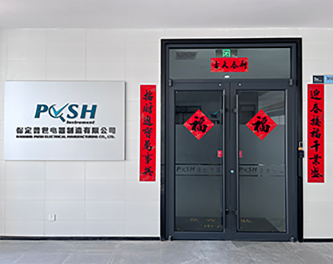 English
English



-
 Afrikaans
Afrikaans -
 Albanian
Albanian -
 Amharic
Amharic -
 Arabic
Arabic -
 Armenian
Armenian -
 Azerbaijani
Azerbaijani -
 Basque
Basque -
 Belarusian
Belarusian -
 Bengali
Bengali -
 Bosnian
Bosnian -
 Bulgarian
Bulgarian -
 Catalan
Catalan -
 Cebuano
Cebuano -
 China
China -
 China (Taiwan)
China (Taiwan) -
 Corsican
Corsican -
 Croatian
Croatian -
 Czech
Czech -
 Danish
Danish -
 Dutch
Dutch -
 English
English -
 Esperanto
Esperanto -
 Estonian
Estonian -
 Finnish
Finnish -
 French
French -
 Frisian
Frisian -
 Galician
Galician -
 Georgian
Georgian -
 German
German -
 Greek
Greek -
 Gujarati
Gujarati -
 Haitian Creole
Haitian Creole -
 hausa
hausa -
 hawaiian
hawaiian -
 Hebrew
Hebrew -
 Hindi
Hindi -
 Miao
Miao -
 Hungarian
Hungarian -
 Icelandic
Icelandic -
 igbo
igbo -
 Indonesian
Indonesian -
 irish
irish -
 Italian
Italian -
 Japanese
Japanese -
 Javanese
Javanese -
 Kannada
Kannada -
 kazakh
kazakh -
 Khmer
Khmer -
 Rwandese
Rwandese -
 Korean
Korean -
 Kurdish
Kurdish -
 Kyrgyz
Kyrgyz -
 Lao
Lao -
 Latin
Latin -
 Latvian
Latvian -
 Lithuanian
Lithuanian -
 Luxembourgish
Luxembourgish -
 Macedonian
Macedonian -
 Malgashi
Malgashi -
 Malay
Malay -
 Malayalam
Malayalam -
 Maltese
Maltese -
 Maori
Maori -
 Marathi
Marathi -
 Mongolian
Mongolian -
 Myanmar
Myanmar -
 Nepali
Nepali -
 Norwegian
Norwegian -
 Norwegian
Norwegian -
 Occitan
Occitan -
 Pashto
Pashto -
 Persian
Persian -
 Polish
Polish -
 Portuguese
Portuguese -
 Punjabi
Punjabi -
 Romanian
Romanian -
 Russian
Russian -
 Samoan
Samoan -
 Scottish Gaelic
Scottish Gaelic -
 Serbian
Serbian -
 Sesotho
Sesotho -
 Shona
Shona -
 Sindhi
Sindhi -
 Sinhala
Sinhala -
 Slovak
Slovak -
 Slovenian
Slovenian -
 Somali
Somali -
 Spanish
Spanish -
 Sundanese
Sundanese -
 Swahili
Swahili -
 Swedish
Swedish -
 Tagalog
Tagalog -
 Tajik
Tajik -
 Tamil
Tamil -
 Tatar
Tatar -
 Telugu
Telugu -
 Thai
Thai -
 Turkish
Turkish -
 Turkmen
Turkmen -
 Ukrainian
Ukrainian -
 Urdu
Urdu -
 Uighur
Uighur -
 Uzbek
Uzbek -
 Vietnamese
Vietnamese -
 Welsh
Welsh -
 Bantu
Bantu -
 Yiddish
Yiddish -
 Yoruba
Yoruba -
 Zulu
Zulu
potentiometric titration
Understanding Potentiometric Titration Principles and Applications
Potentiometric titration is a sophisticated analytical technique utilized to determine the concentration of an analyte in a solution by measuring the electrical potential (voltage) changes that occur during a titration process. Unlike traditional titration methods that rely on visual indicators, potentiometric titration employs electrodes to provide precise and objective measurements, making it a valuable tool in various fields such as chemistry, biochemistry, and environmental science.
The principle of potentiometric titration is centered around the Nernst equation, which describes how the potential difference between two electrodes is related to the concentration of the ions in solution. In a typical setup, one electrode serves as an indicator electrode that responds to the concentration of the target analyte, while a reference electrode maintains a constant potential. Together, these electrodes allow for continuous monitoring of the potential changes as a titrant is added to the analyte solution.
One of the primary advantages of potentiometric titration is its high sensitivity and accuracy. This method can detect very small changes in pH or potential, which is crucial when dealing with weak acids and bases or in cases where the endpoint is difficult to determine visually. Moreover, potentiometric titration can be automated, which enhances its reproducibility and efficiency. Automated systems can continuously record potential changes and compute the titration curve, allowing for precise determination of the equivalence point.
A common application of potentiometric titration is in acid-base titrations. By using a glass electrode as the indicator, scientists can monitor the pH changes in a solution as a strong or weak acid is titrated with a strong or weak base. The equivalence point is characterized by a rapid change in pH, which corresponds to a distinct peak in the titration curve. This data can then be used to determine the concentration of the unknown acid or base.
potentiometric titration

Another significant application is in the titration of redox reactions, where the potential of the solution changes according to the species involved in the electron transfer process. Here, a redox indicator electrode is employed to detect these changes. Potentiometric titration is frequently utilized in environmental analysis to assess water quality by measuring the concentration of heavy metals and other contaminants. This method is advantageous as it can provide real-time results and is often more accurate than colorimetric methods.
Furthermore, potentiometric titration is also used in pharmaceutical analysis to determine the concentration of active ingredients in drug formulations. Its ability to provide precise measurements without affecting the sample makes it an ideal choice for ensuring compliance with regulatory standards in the pharmaceutical industry.
Despite its numerous advantages, potentiometric titration also has limitations to consider. For example, the choice of electrodes can significantly affect the results, as different electrodes are sensitive to different ions and conditions. Additionally, the presence of interfering substances in the solution can skew the measurements and lead to inaccurate determinations.
In conclusion, potentiometric titration is a powerful analytical tool that provides accurate, sensitive, and objective measurements during the titration process. Its diverse applications across various scientific disciplines highlight its importance in research, quality control, and environmental monitoring. As technology continues to advance, the potential for potentiometric titration to develop further and refine its applications remains promising, paving the way for more sophisticated analytical techniques in the future.
-
Exploring the Main Types of Industrial Endoscopes and Their Applications Across IndustriesNewsJul.04,2025
-
Testing Equipment Industry Sees Major Advancements in 2025: Smart & Precision Technologies Lead the WayNewsJun.06,2025
-
Applications of Direct Current Generators in Renewable Energy SystemsNewsJun.05,2025
-
Hipot Tester Calibration and Accuracy GuidelinesNewsJun.05,2025
-
Digital Circuit Breaker Analyzer Features and BenefitsNewsJun.05,2025
-
Benefits of Real-Time Power Quality Monitoring Devices for Industrial EfficiencyNewsJun.05,2025



